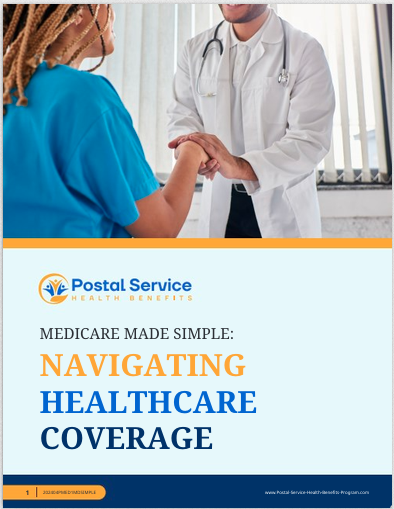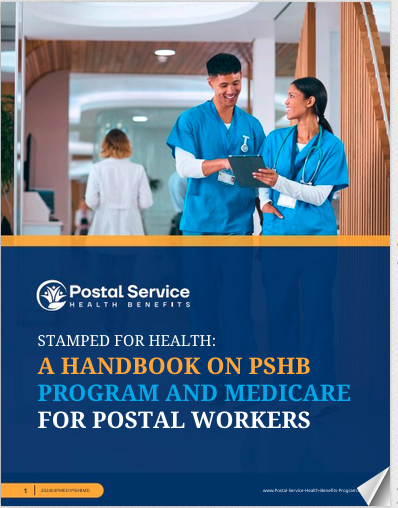Key Takeaways
-
Understanding how to compare Postal Service Health Benefits (PSHB) plans is crucial to choosing the best option for your needs.
-
Accessing reliable resources ensures you stay informed about plan features, costs, and enrollment details.
Why Reliable PSHB Resources Matter
Navigating the Postal Service Health Benefits (PSHB) program doesn’t have to feel overwhelming. Whether you’re a current Postal Service employee, an annuitant, or a family member, having access to the right information is key to making informed decisions about your healthcare. Reliable resources can help you understand the differences between plans, know what to expect during enrollment, and avoid unnecessary costs. These resources are not only essential for evaluating your immediate needs but also for planning long-term strategies to manage your health and finances effectively.
Comprehensive and updated resources also eliminate guesswork. With so many plans available, even small details can have a significant impact on your overall costs and access to care. Taking the time to explore reliable information ensures you’re not caught off guard by unexpected changes or fees.
Where to Start Your Research
Getting started on your journey to finding the best PSHB resources begins with understanding what to look for. The following key areas should be your focus:
Official Government Resources
The U.S. Office of Personnel Management (OPM) and the USPS websites are the primary sources of official information about PSHB plans. They offer:
-
Detailed plan brochures
-
FAQs about coverage and enrollment
-
Tools for plan comparisons
These official resources are updated frequently to reflect the latest policy changes, deadlines, and benefits. Make sure to check these websites regularly, especially during the Open Season period from November 11 to December 13 each year, when you can review or update your plan.
Interactive Plan Comparison Tools
Some platforms provide comparison tools that allow you to enter specific details like your location, preferred healthcare providers, and estimated usage to identify plans that suit your needs. Look for:
-
Side-by-side comparisons of plan features
-
Cost breakdowns, including premiums, deductibles, and copayments
-
Details on in-network vs. out-of-network services
These tools often include additional features such as filters for specific plan benefits or coverage tiers. Using them can save time and provide clarity on which plans align with your personal and family needs.
Community Forums and Online Groups
Online communities can be a great place to gather insights from others enrolled in PSHB plans. These forums often include:
-
Honest reviews of specific plans
-
Tips on maximizing benefits
-
Answers to frequently asked questions from real users
While these can be helpful, remember to verify information against official resources. Opinions shared in these groups may not always be accurate or applicable to your situation.
Decoding Plan Features
Understanding PSHB plan features is essential to making an informed choice. Here are some aspects you should evaluate:
Premiums and Government Contributions
The government covers approximately 70% of premium costs, but your share will depend on the plan type and coverage level. Look for resources that clearly outline:
-
Premium costs for Self Only, Self Plus One, and Self and Family plans
-
Additional benefits tied to premium levels
Comparing premium costs is particularly important if you’re evaluating plans for multiple family members. Differences in coverage levels and government contributions can significantly affect your out-of-pocket expenses.
Deductibles and Out-of-Pocket Maximums
Plans may have varying deductibles and out-of-pocket maximums for in-network and out-of-network services. Reliable resources should help you compare:
-
Low-deductible vs. high-deductible plans
-
Annual out-of-pocket caps, including those for prescription drugs
Understanding these thresholds can help you budget effectively, especially if you anticipate regular medical expenses or major healthcare needs in the coming year.
Copayments and Coinsurance
Resources should provide transparent information on:
-
Copayment amounts for primary care, specialists, urgent care, and emergency visits
-
Coinsurance percentages for various types of care
This information is critical when calculating the total cost of care. Knowing these details upfront allows you to estimate how much you’ll pay for routine appointments or unexpected medical issues.
FAQ Sections to Look For
FAQs are a goldmine for quick answers to common questions. Make sure the resources you rely on cover the following areas:
Eligibility and Enrollment
Find answers to questions like:
-
Who qualifies for PSHB coverage?
-
What are the deadlines for enrollment or plan changes?
Eligibility rules can be complex, especially if you’re coordinating benefits for family members or transitioning between employment statuses. Reliable FAQs can simplify these details and help you meet important deadlines.
Medicare Integration
For Medicare-eligible annuitants and family members, look for resources explaining:
-
How PSHB plans coordinate with Medicare Part B
-
Benefits of enrolling in Medicare alongside your PSHB plan
Understanding this integration is particularly beneficial for retirees or those approaching Medicare eligibility. It ensures you maximize the value of both programs without unnecessary overlap.
Pharmacy Benefits
Understand the specifics of prescription drug coverage, including:
-
Formulary lists and tier levels
-
Options for mail-order prescriptions
-
Costs for generic vs. brand-name drugs
Clear explanations of these features can help you avoid surprises at the pharmacy counter and ensure your medications remain affordable throughout the year.
How to Stay Updated
Keeping up with changes to PSHB plans requires diligence. Here are some strategies to ensure you never miss important updates:
Subscribe to Newsletters
Sign up for newsletters from OPM or USPS to receive updates on Open Season dates, plan changes, and other essential information directly in your inbox. Regular updates ensure you’re always aware of new opportunities to adjust your coverage or take advantage of added benefits.
Monitor Annual Notice of Change (ANOC) Letters
These letters outline changes to your current plan for the upcoming year, including:
-
Adjustments in premiums, deductibles, and copayments
-
Modifications to coverage or benefits
Taking the time to review these notices carefully can prevent unexpected changes from affecting your healthcare budget.
Attend Webinars and Info Sessions
Many organizations host webinars during Open Season to help you understand plan options and answer your questions in real-time. These sessions are a convenient way to learn directly from experts and clarify any confusion about plan details.
Tips for Comparing Plans Effectively
Choosing the right PSHB plan involves more than just glancing at premiums. Use these tips to dig deeper:
Focus on Total Costs
Consider the overall costs, including:
-
Monthly premiums
-
Annual deductibles
-
Copayments and coinsurance for regular services
This holistic approach ensures you’re not swayed by a low premium alone, which may come with higher out-of-pocket costs elsewhere.
Evaluate Provider Networks
Ensure your preferred doctors, hospitals, and specialists are in-network to avoid higher out-of-pocket costs. Use tools to check the availability of local providers before finalizing your choice.
Review Supplemental Benefits
Look for additional perks like:
-
Vision, dental, and hearing coverage
-
Wellness programs and discounts
Supplemental benefits can add significant value, especially if these services are priorities for you or your family.
Common Mistakes to Avoid
Avoid these pitfalls when researching and selecting a PSHB plan:
Ignoring Out-of-Network Costs
Out-of-network services can lead to significantly higher expenses. Make sure you understand the implications of using out-of-network providers.
Rushing Through Open Season
Take your time to evaluate your options. Rushed decisions often lead to selecting plans that don’t fully meet your needs.
Overlooking Plan Changes
Even if you’re satisfied with your current plan, it’s essential to review any updates or changes for the new year. Ignoring these details can lead to unexpected disruptions in your coverage.
Planning for Future Healthcare Needs
Healthcare needs can change over time. When comparing PSHB plans, consider:
Anticipated Life Changes
Think about how events like retirement, a growing family, or chronic health conditions might affect your coverage needs. Proactively planning for these changes ensures you’re not caught off guard.
Long-Term Costs
Evaluate whether a plan’s costs align with your long-term healthcare budget. Small differences in premiums or deductibles can add up significantly over time.
Coverage for Dependents
Ensure your plan offers adequate coverage for all eligible family members. Review dependents’ needs annually to make adjustments as required.
The Final Word on Reliable PSHB Resources
Navigating the world of Postal Service Health Benefits becomes much simpler when you rely on accurate, comprehensive resources. By focusing on official tools, detailed plan comparisons, and clear FAQs, you can feel confident in your choices. Take your time during Open Season to evaluate your options and select the plan that best meets your needs today and in the future.







